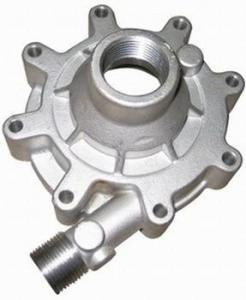Sand Casting Flask: A Comprehensive Guide
Are you interested in learning more about sand casting flasks? If so, you’ve come to the right place. Sand casting is an ancient metalworking technique that has been used for centuries to create intricate metal objects. In this article, we will delve into the details of sand casting flasks, exploring their history, process, benefits, and applications. Whether you are a hobbyist, artisan, or professional, this guide will provide you with a comprehensive understanding of sand casting flasks.
History of Sand Casting

The art of sand casting dates back to ancient civilizations, with evidence of its use in China as early as 2000 BCE. Over the centuries, this technique has evolved, and it is now widely used in various industries. Sand casting involves creating a mold from sand, which is then used to produce metal objects. The process has been refined and improved, making it a cost-effective and versatile method for metal production.
Process of Sand Casting

The sand casting process can be broken down into several key steps:
-
Pattern Creation: The first step is to create a pattern, which is a replica of the final product. This pattern is typically made from wood, metal, or plastic.
-
Mold Preparation: The pattern is then placed in a flask, which is a box-like structure made of sand. The flask is filled with sand, and the pattern is removed, leaving a cavity in the sand that matches the shape of the pattern.
-
Core Making: If the flask requires internal cavities, cores are made from sand and placed inside the flask to create these cavities.
-
Molding: The flask is then closed, and more sand is packed around the mold to create a solid mold. The mold is then trimmed and finished to remove excess sand.
-
Casting: Molten metal is poured into the mold, filling the cavity and cores. The metal solidifies and shrinks as it cools.
-
Finishing: The casting is then removed from the mold and cleaned. Any excess material is removed, and the casting is heat-treated and polished to achieve the desired finish.
Benefits of Sand Casting

Sand casting offers several advantages over other metalworking methods:
-
Cost-Effective: Sand casting is a cost-effective method for producing metal parts, especially for large quantities.
-
Complex Shapes: Sand casting can produce intricate and complex shapes that are difficult to achieve with other methods.
-
Material Variety: A wide range of metals can be cast using sand casting, including steel, aluminum, brass, and copper.
-
Customization: Sand casting allows for customization and flexibility in design, making it suitable for a variety of applications.
Applications of Sand Casting
Sand casting is used in a wide range of industries, including:
-
Automotive: Engine blocks, cylinder heads, and other engine components are commonly produced using sand casting.
-
Aerospace: Sand casting is used to produce aircraft components, such as landing gear and engine parts.
-
Construction: Sand casting is used to produce metal structures, such as bridges and buildings.
-
Consumer Products: Sand casting is used to produce a variety of consumer products, including cookware, lawn furniture, and garden ornaments.
Conclusion
Sand casting flasks are a versatile and cost-effective method for producing metal parts. With a rich history and a wide range of applications, sand casting continues to be an important technique in the metalworking industry. Whether you are a hobbyist or a professional, understanding the process and benefits of sand casting can help you make informed decisions about your metalworking projects.
| Step | Description |
|---|---|
| Pattern Creation | Create a replica of the final product from wood, metal, or plastic. |
| Mold Preparation | Place the pattern in a flask and fill it with sand to create a mold. |













